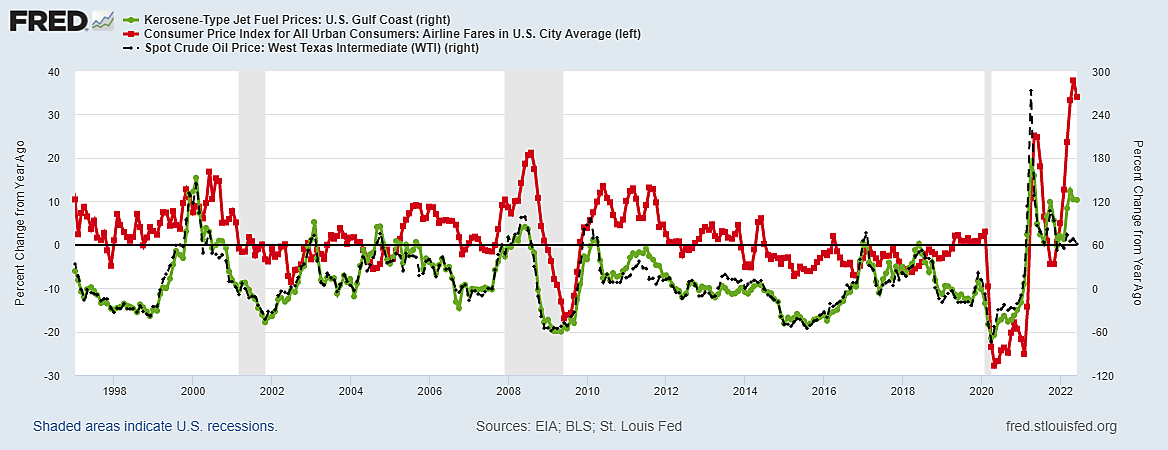Unsurprisingly, airline fares generally rise and fall with jet fuel prices which, in turn, mirror global crude oil prices. Yet airline fares are part of the “core” Consumer Price Index (CPI), which supposedly excludes food and energy.
Futures prices for crude oil and grain have soared since last December when Russia began to amass troops around Ukraine. That rise in global commodity prices, in turn, has greatly increased costs of producing and distributing everything from plastics to fertilizer and meat. And, of course, so-called “core” transportation services, such as airfares.
In the CPI, airline fares rose 34.1% over the past 12 months, while energy prices rose by 41.6% and gasoline prices by 59.9%. All those prices reflect the impact of war and sanctions on global scarcity and soaring prices for oil and natural gas.
The core CPI excludes only gasoline, fuel oil, propane, kerosene, firewood and home electricity and gas bills. But that narrow list leaves many indirect energy costs in the core measure, such as airfare.
As former Fed Vice-Chair Alan Blinder noted, “food and energy prices seep into virtually all other prices, albeit in muted form. What product doesn’t include energy in its cost, either directly (to keep the lights on) or indirectly (via delivery trucks)?”
Airline fares in the CPI rose 12.9% in the month of May, then fell 2.5% in June. A proper measure of core inflation, such as the Dallas Fed’s Trimmed-Mean PCE inflation, would strip out both of those extreme monthly gyrations. But the core CPI does not.

